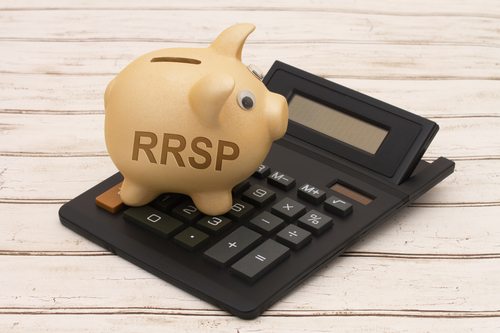This time of year I propose that you focus on “Strategies 360°.” That is, your big picture. For example, review what is best for you. Follow your total investment plan. It’s too easy to be preoccupied only with RRSPs.
First, a few highlights about my overall approach:
- I recommend growing the RRSP wisely and sensibly over the long haul.
- Refrain from placing portfolio performance in top spot among your priorities.
- Never lose sight that your primary mission is to manage investment risks.
- RRSPs can deliver steady income streams during your years of retirement.
RRSPs have grown substantially, many approaching ballpark values of $1,000,000 to $2,000,000 per family. Also consider that various investors own the RRSP’s financial cousin, a flavour of the Locked-In Retirement Account (LIRA). Such a plan is typically created when the commuted value of an employer pension is transferred to a locked-in account, resembling an RRSP.
Today’s LIRA values can easily range from $300,000 to $500,000. While RRSP deposits cannot be made to a LIRA, the account needs to be invested alongside the rest of the nest egg.
Understanding RRSPs is essential to the multi-year planning marathon. RRSPs really fit two camps of investors like a glove: those without employer pension plans and the self-employed.
Stay focused on how the RRSP fits into your total game plan. The power of tax-deferred compounding really delivers. Keep your RRSP mission simple and treat it as a building block. Take every step that improves the money outlasting the family requirements.
I summarize the vital RRSP planning areas:
1.) Closing 2018
Your 2018 RRSP limit is 18% of your 2017 “earned income”, to a maximum of $26,230. This sum is reduced by your pension adjustment from the 2017 employment slip. The allowable RRSP contribution room includes carry-forwards from previous years.
RRSP deposits made by March 01, 2019 can be deducted in your 2018 income tax filing. There is no reason to wait until the last minute where funds are available. Your 2017 Canada Revenue notice of assessment (NOA) outlines the 2018 RRSP room.
My table illustrates the progression of annual RRSP limits:
| Tax Year | RRSP Limit | Earned Income Required* |
| 2018 | $26,230 | $145,700 in 2017 |
| 2019 | $26,500 | $147,200 in 2018 |
| 2020 | $27,230 | $151,300 in 2019 |
* Figures rounded
2.) Sensible strategies
I can’t emphasize enough to always treat the RRSP as an integral part of the total game plan, not in isolation. Become familiar with how the RRSP fits the family objectives before designing the personal plan. A retirement projection is a great starting tool. It estimates saving capacity injections, necessary capital and investment returns for the family.
RRSP deposits don’t have to be made every year. Unused RRSP room can be carried forward until funds are available. RRSP deposits can be made in cash or “in kind.” You can also make an allowable RRSP deposit and elect to deduct part or all in a future year. Ensure that all beneficiaries are named.
Borrowing funds to catch up on RRSP deposits has saving capacity implications. Ideally, keep loan repayment to one year and apply the tax refund to it. Especially, when contemplating an RRSP loan for multiple years. Note that RRSP loan interest is not deductible.
3.) Spousal RRSP
RRSP deposits can be made to your account, the spousal, or combination of both. A family can also make all deposits to one spouse and later switch to the other. Spousal RRSPs play a key role in equalizing a family’s retirement income. Particularly, in cases where one spouse will be in a low, or lower, tax bracket during the family’s retirement.
The contributor deducts the spousal RRSP deposit while the recipient owns the investments. Spousal deposits are not limited to the 50% rule for pension income splitting. A top family goal is to achieve similar taxation for each spouse during retirement. Splitting of income that qualifies for the $2,000 pension credit also helps.
4.) RRSP investing
Begin by coordinating your RRSP investing approach with the total portfolio. One RRSP account per individual, plus a spousal where applicable, should suffice for most cases. Be aware of plan fees if you own more than one account.
Never place tax provisions ahead of sensible investment strategies. If investments don’t make sense without tax enhancements, look elsewhere. Investment income earned in RRSP accounts is tax-deferred until withdrawn. All funds received from an RRSP are fully taxable, like salary.
“Location” of investments in your accounts is important. For example, stocks may be better owned outside RRSPs. There is no favourable tax treatment of Canadian dividends, gains or losses in RRSPs. Further, the dividend tax credit is lost as it cannot be used in RRSPs.
Where possible, interest bearing investments may be better held in RRSPs. Be fully aware of the risks incurred inside the RRSP. Personal capital losses cannot be offset against gains in RRSPs.
5.) Planning 2019 and beyond
RRSP room for any year is calculated based on remuneration from the previous year. Your 2018 Notice of Adjustment (NOA) will summarize 2019 RRSP room.
Send form T1213 to CRA to reduce payroll taxes after your 2019 RRSP deposit is made. Business owners and self-employed are wise to start planning their 2019 “earned income”. Arranging 2019 remuneration of $151,300 generates 2020 RRSP limit of $27,230.
Making RRSP deposits early in the year achieves higher investment growth. If you turn 65 in 2019, you may benefit converting some of your RRSP to a RRIF before December 31. This takes advantage of the pension income tax credit, and perhaps pension splitting with your spouse.
6.) RRSP conversion
Those turning age 71 during 2019 must convert the RRSP by December 31, likely to a RRIF. Hence, begin planning RRSP conversion early in the year. Choices include the RRIF, annuities and cashing the RRSP. The RRIF is most popular because it provides considerable flexibility. RRSP conversions require deposits be made by December 31, unless there is a younger spouse.
Annuities are not flexible, while the tax hit on cashing RRSPs has no appeal. Investors may already own annuities via CPP, OAS, Social Security and employer pensions. RRSP draws can be made until age 71. RRSPs can also be converted in part or in full before age 71.
7.) Individual Pension Plan (IPP)
Companies may explore the value of pursuing an Individual Pension Plan (IPP) versus RRSP provisions. While the rules are more involved, the benefit of IPPs may be worth the extra efforts. You are more likely to require the services of a professional who works with these plans.
8.) Lifelong Learning Plan (LLP)
The Lifelong Learning Plan (LLP) allows withdrawal up to $10,000 in a calendar year from your RRSP to finance full-time training or education for you or your spouse or common-law partner. You cannot draw more than $20,000 in total. Several conditions must be met.
9.) Home Buyer’s Plan (HBP)
The Home Buyers’ Plan (HBP) allows withdrawal up to $25,000 in a calendar year from your RRSP to buy or build a qualifying home for yourself or a related person with a disability. The maximum draw for a couple is $50,000. There are also several conditions to qualify.
10.) Lower-income earners
Lower-income earners may enjoy more benefit by using a TFSA and postponing RRSP deposits to higher income years. Unused room is carried forward for both the TFSA and RRSP. In addition, both plans can serve as the emergency fund, although RRSP draws are taxable.
Wrapping up
RRSP strategies are vital cornerstones of the retirement puzzle. Treat yours with special care, especially if you’re near or in retirement. For me, the venerable RRSP is not to be overlooked. I favour blending RRSP strategies with the RRIF, TFSA and cash accounts. Total family planning is the most beneficial course of action.
Think ahead to where you are headed. Devote ample time emphasizing “Strategies 360°.” Then design and deploy your action plan. Always pursue your best interests. Ensure that all your beneficiary designations, especially the spouse, are up to date for the investment accounts. This journey is for the long run.
My RRSP playbook paves the way. The assortment of strategies offer vital RRSP planning ideas for everyone.
 Adrian Mastracci, Discretionary Portfolio Manager, B.E.E., MBA started in the investment and financial advisory profession in 1972. He is currently a portfolio manager with Vancouver-based Lycos Asset Management Inc. He graduated with the Bachelor of Electrical Engineering from General Motors Institute in 1971, then attended the University of British Columbia, graduating with the MBA in 1972.
Adrian Mastracci, Discretionary Portfolio Manager, B.E.E., MBA started in the investment and financial advisory profession in 1972. He is currently a portfolio manager with Vancouver-based Lycos Asset Management Inc. He graduated with the Bachelor of Electrical Engineering from General Motors Institute in 1971, then attended the University of British Columbia, graduating with the MBA in 1972.



